How To Put On Weight & Muscle With 5x5 Training -
Hellllooo
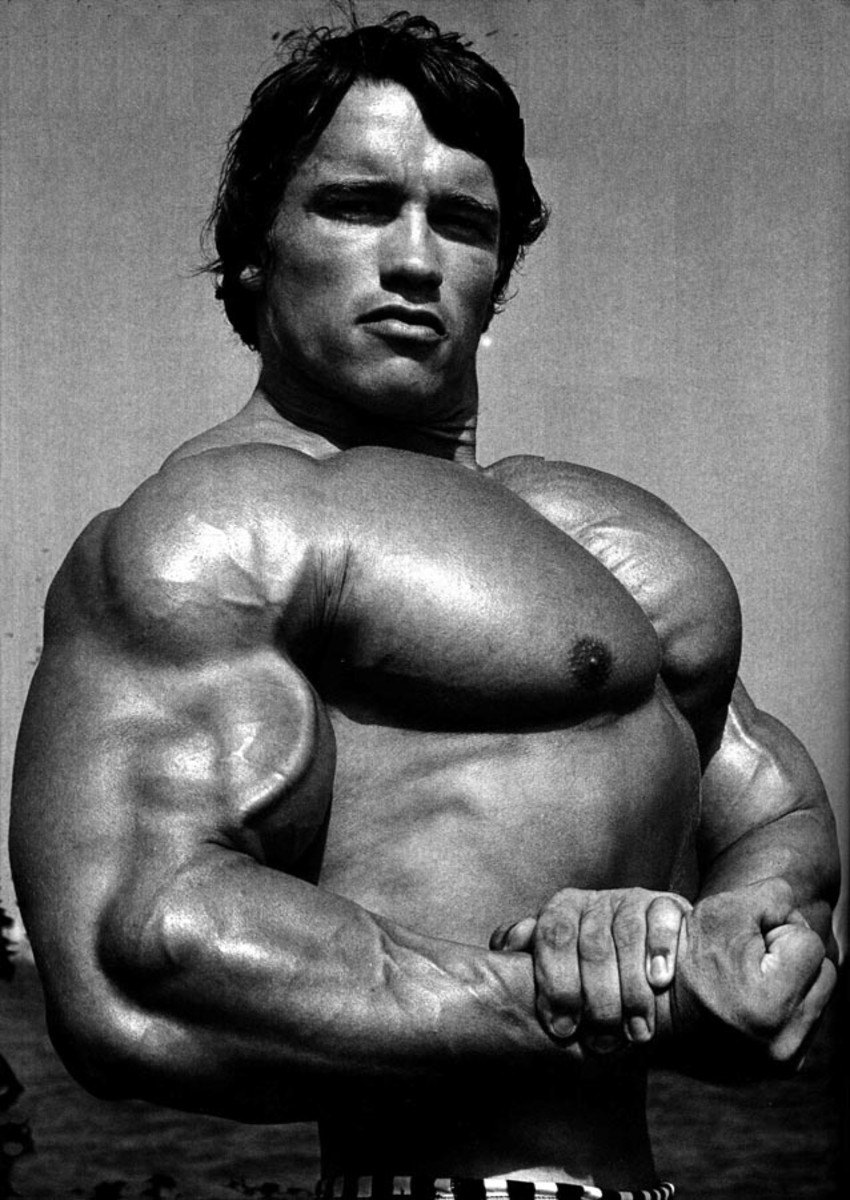
This article gives some exercise tips and low cost, easy food ideas to help you put weight on and gain muscle, by using compound exercises. These are straightforward exercises and basic foods that will help you if you want to put on weight and get stronger. The 5x5 workout is how Arnold Schwarzenegger started when he was young man who wanted to get big. It certainly worked and is a great way to get strong & muscular, especially for your first year or two of training.
Years ago I used to be very skinny, before I started lifting weights and eating a lot. Along the way I did some research into what I could do to help put weight on. Here are some basic principles.
Exercise & calorie surplus = weight gain
It is fairly simple really. If you are taking in more calories than you are using, then you'll put weight on. If you are thin and want to do this though there is no point just putting on fat. You want to put on muscle ideally and keep your fat levels to a healthy point.
If you are skinny, what you need to do is lift weights and eat. A lot!
The squat
The military press
The deadlift
The bench press
The barbell row
Dips
The 5x5 workout
There are a million different workouts out there and lots of conflicting advice. The magazines have to have something new to put in every week, so there are always new exercises and tips so you can easily get overwhelmed with advice. However the best advice is to keep it simple.
The 5x5 routine is a time proven method for getting stronger and bigger. There is very little complexity, you have several exercises and only two different workouts. You alternate them every workout. Every exercise you try to lift the same weight for 5 sets of 5 reps. If you manage it, then the next week you bump the weight up a bit. Try not putting it up by much, 2.5kg when you start out, but after you've been lifting for a while then only putting it up by 1kg a time. It stays at that weight til you can do 5 sets of 5 again.
If you get to a sticking point where you are stuck on the same weight for 3 workouts, you take 10% off your weights, then start the cycle again with lighter weights and build your way back up. This stops overtraining and gives your body, mind and central nervous system a break. So lets say you can bench 100kg. If you get to the point where you can't do it any more, then drop it 10%, so to 90kg, then work it back up again.
Workout session 1
Squats, deadlifts and overhead press make up workout one. Those exercises are demonstrated on the right. 5 sets of each exercise, but ramp the weight up with deadlifts, so it gets heavier each set until your heaviest is the last set.
Workout session 2
For the other session you squat, bench press then barbell row. Alternate these two workouts. If you want to add some extra curls, dips or chin ups then you can, but the best bet is to just add 3 or so sets of these accessory exercises after you've done your main lifts. They will give your arms a bit more stimulation.
Is that it?
Now a common mistake people make when they start lifting, is to lift too much and overtrain. For at least the first 6-12 months stick to this basic routine and carry on upping your weights. If you want to diversify after that, do so, but always stick to the basics is my advice and you will build a strong body with a strong core and a lot of functional strength. If you start adding a lot of supplementary exercises you can tip the balance, so get used to lifting hard and heavy first and then maybe add the odd thing here and there once you have a lot of experience.
The deadlift is a great exercise. It uses most of the muscles in the body although the main parts you will strengthen are your back and legs. You have to make sure you keep good form as you don't want to injure your lower back. Keep your abs flexed as tight as possible while lifting and try and push your heels through the floor.This is an awesome exercise for the feeling of lifting big weights off the floor makes you feel great.
Benchpressing is mainly for your chest, shoulders and triceps. Keep an eye on your form and focus on the muscles you're using. A tip that works is to keep your abs tight and flexed and grip on the bar as tight as possible all the way through the movement.
The squat is mainly a leg movement, although this also works your back and core. Keep form tight!
Pullups
The military press is mainly for your shoulders, although your core and triceps get involved too.
The bent over barbell row is a great back and bicep exercise.
Pullups work your back and biceps.
Dips work your chest, shoulders and triceps.
3 exercises per workout with 5 sets per exercise is a total of 15 sets per workout. Once you can do your pullups / dips easily, then buy a weight belt and start adding weights. After the workout you stretch and then go home. Done in no time!
All exercises are large multijoint movements, (known as compound movements). These will give you the most benefit. After you you have been lifting for a while you can add some curls, dips or chin-ups after the session to aid your arms development. I wouldn't do that at the start though, as you'll have to get used to the routine first.
This is a really simple routine, but if you stick to it and continue upping the weights while making sure you're eating a lot you will get stronger and bigger. There is no real need to train abs, if you are keeping your abs flexed hard while doing your other lifts, they get a real workout. I often have the same feeling as I used to get from doing a lot of situps after my deadlifting days, as I keep my core as tight as possible.
The important thing to remember is that when in the gym you are breaking your muscles down when lifting heavy. They will only repair and grow back larger when you are resting. So make sure after you lift, get plenty of food and sleep to allow your body to heal. Leave it a couple of days between workouts, working out every day is counterproductive as you break the muscles down, but then they don't recover before you do it again, so don't do this, you'll end up smaller and weaker!
What starting weights to use
This depends on your strength and gym experience. If you're a beginner, start with the bar. If you've been lifting for a while, start with a bit more. You have to have a weight on there you can comfortably lift for 5x5 as even if it is light to start, it will get heavier.
Add weight slowly
Once you get to a point where the weights are heavy, then it is a good idea to get some fractional weight plates. These let you increase the weight just a little at a time. You're not going to be able to increase it by 2.5kg / 5lbs per session forever, but you can often find that if you're only adding a little, then you can make the lift. Of course depending on what country you're in you're going to be using either kg, or lb plates. The concept is the same, just use small weights rather than large to increase the amount on the bar!
What to do when you can't hit 5x5 any more
There will come a point when you can't hit 5 sets of 5 reps any more even after you've deloaded and worked back up. At that point, then start ramping the weight over your sets. You will already be doing this on deadlift. For example lets say you deadlift 140kg. Your weights would look something like this; 60, 80, 100, 120, then a final set of 140kg. Spread the intervals between weights equally. You do this ramping with all of your exercises once the straight set approach is too tough to maintain.
The lighter sets allow your body and mind to warm up and get into the groove while the last set is the tough one. If you do this, then you will find that you'll be able to lift a lot more weight on the last set as you're only doing it for one, rather than trying to do across 5 sets. You will still be gaining as you'll still be working hard, but the best bet is to get as much benefit from straight sets as possible before switching to ramping sets.
You can then follow the same deloading rule as before. There are other workouts to follow after you've reached the point where you stop gaining on this system, but this will take you at least a year of solid lifting and eating, so is a great way to get started.
Cardio?
If you are trying to gain weight, then ideally you shouldn't do much cardio. If you do want to do it then don't do it at the same time as your workout. If you do it you're better off doing 20 minutes or so of cardio on your off days. I train at a martial art which has pretty intense cardio, but I don't do that on lifting days.
This workout is what Chris Hemsworth used to get big for the film Thor. Left is before, right after. How would you rather look?

Too big? Or just in great shape?
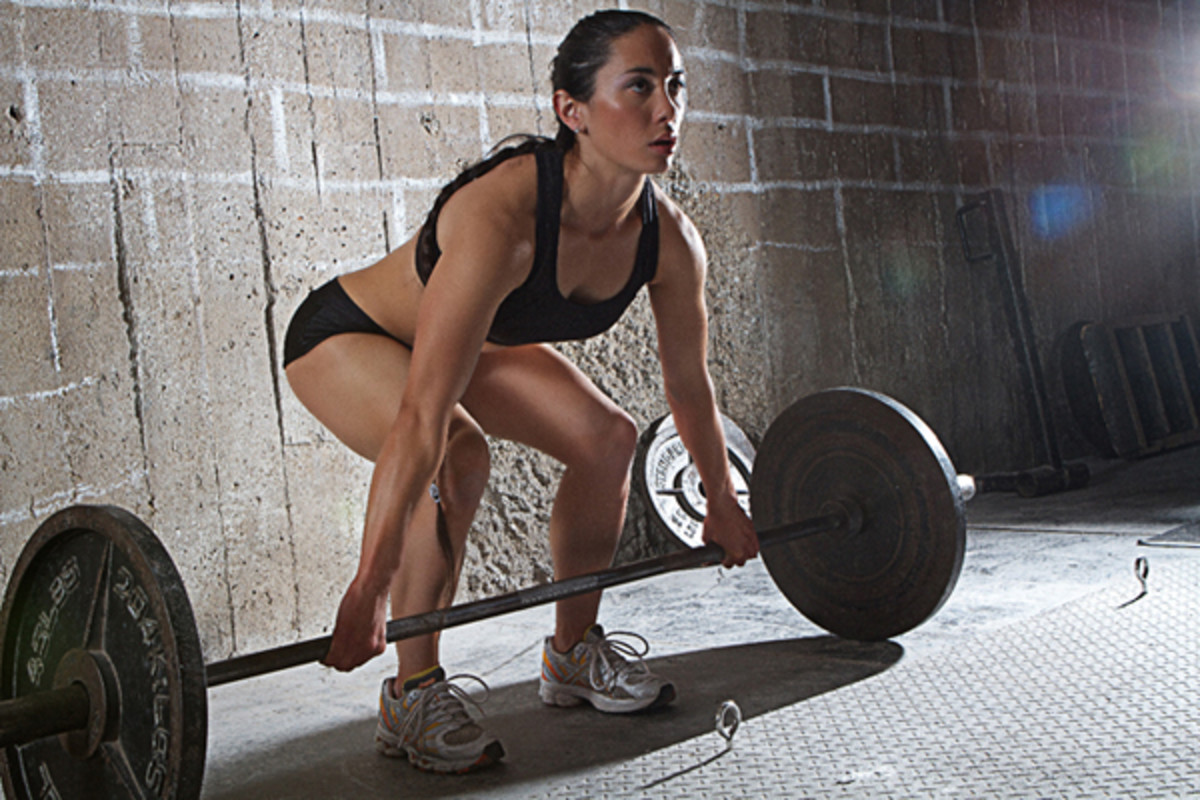
Lifting weights? OK for men. But women can't lift weights..
This is simply untrue. Most women out there have a misconception that if they lift a weight, they'll end up looking like a bodybuilder. This is unrealistic. Firstly women have to train much harder than men to make any muscle gains. Secondly gaining muscle is hard. If you want to put anything on, you have to lift a lot of weight, consistently for years. There is no way you'd suddenly get 'too big'.
Even if you have no desire to have a bodybuilder type physique, a strong healthy body is good for everyone to get. Strength building is very beneficial for women as not only will they look and feel better, but the more muscle you have, the more calories your body uses, so you will be able to eat more without gaining fat. Double benefit!
So that's the weights sorted. What about food?
Well there are some core principles that you need to stick to while putting on weight. The first is to make sure you eat a lot of food. But eating anything is not ideal, you need to eat the right sort of food, ideal food that is high in protein and carbohydrates while being low in fat.
Typically an average size man needs 2500 calories a day and a woman 2000. But if you're putting on weight, this amount isn't enough, you're going to want to eat 3000 or more calories a day, with plenty of protein and carbs with a small amount of fat.
The ratio isn't set in stone, but 60% of your calories from carbs, 25% from protein and 15% from fat is the right sort of mix. If you're gaining muscle, then you take your lean bodyweight in pounds and take in 1 to 1.5 grams of protein per pound. So if you weigh 180lbs pounds for example at 10% bodyfat so your lean bodyweight is 162lbs, then 162 then you need to eat between 160 to 240 grams of protein a day. To measure your bodyfat, you can use calipers or for a rough guide, compare your body to pictures.
Which one looks the most like your bodyfat level?

Get used to the sight of one of these!
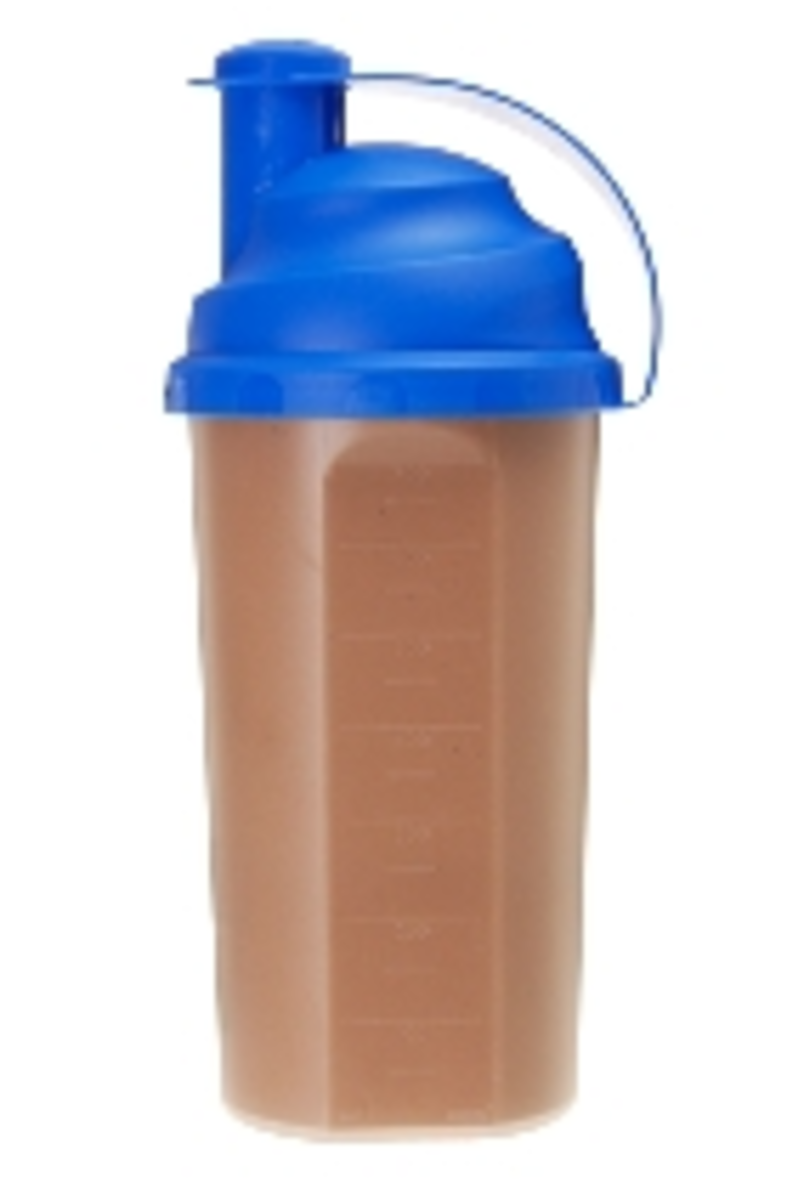
Some people say this level of protein is unnecessary for muscle growth and you can get by on less. But what have you got to lose by doing it? It's not too tough and even if your body doesn't absorb it all, it's not going to do you any harm as long as you don't go crazy and start eating many hundreds of grams of protein a day as your body will just excrete what it doesn't utilise. You need to make sure you are drinking more water if you are eating a lot more protein as it is a bit harder on your kidneys, it will not be an issue as long as you don't go crazy and stay hydrated.
To get this amount of protein in your system you can eat a lot of meats including beef, chicken and turkey, plus eat a lot of eggs and drink a lot milk. To physically get this amount of protein in your day through eating can be a little challenging and expensive so an easy way to supplement your diet is with protein shakes. They are not meant to replace dietary protein, but to add to it, so make sure you're still eating well!
An easy way to use shakes is one with breakfast, one when you get back from school / work and one after your evening meal.
Adding three protein shakes a day can add an easy 90-100g of protein, which helps out towards your daily goals. There are loads of different suppliers out there and all sorts of different claims, but really just a basic protein powder will do the job as well as an expensive one in my opinion.
I feel hungry just looking at these!
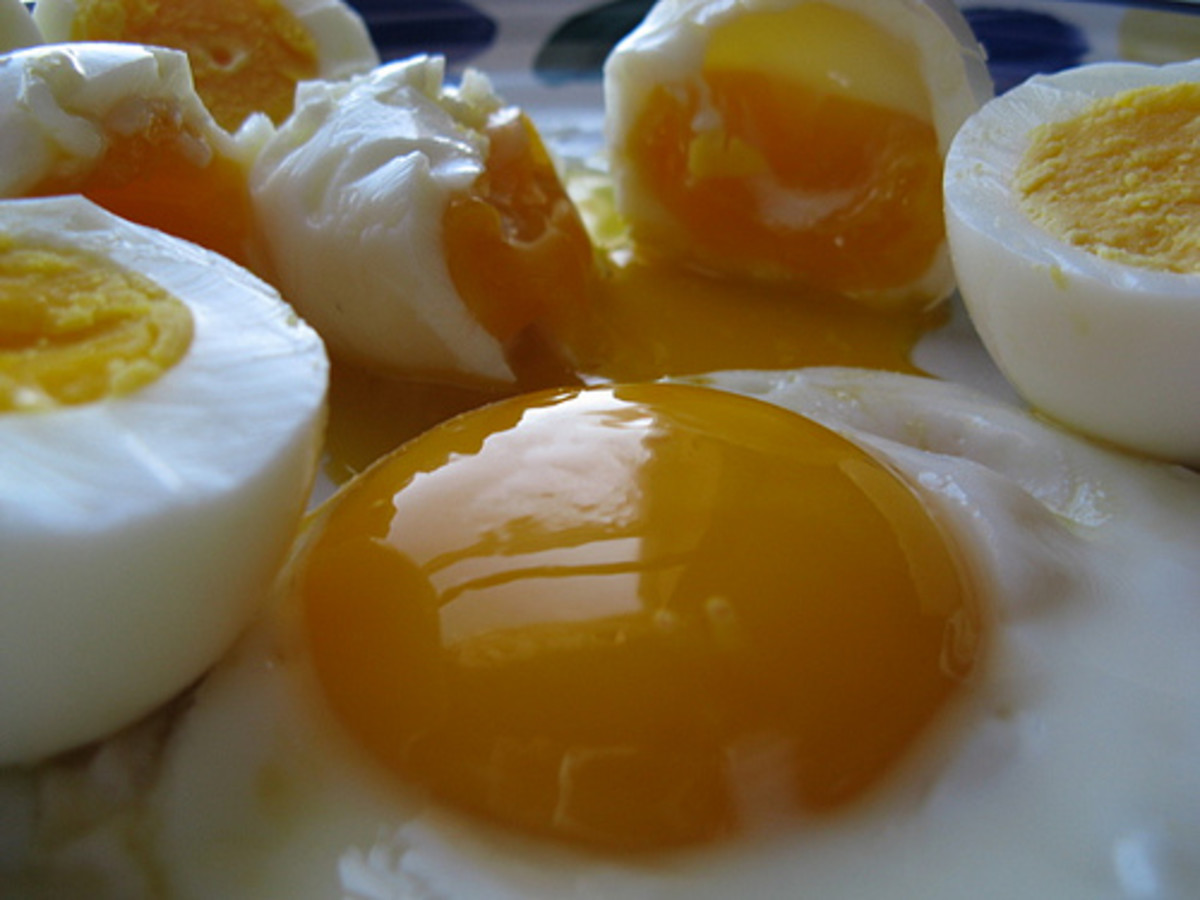
So what should you eat?
Tinned tuna and baked beans is a time honoured bodybuilding meal. It is extemely cheap. It contains approximately 60g of protein and 55g of carbs, with 15g fat and 680 calories. It doesn't taste great, but it gets the job done.
Porridge oats or weetabix in the morning with a protein shake and a banana is a great breakfast. Plenty of carbs, protein and fibre, while being low in fat.
One of my favourite post workout meals is a large rare steak, with a couple of eggs on top, with a couple of large jacket potatoes. Plenty of carbs and protein in that. After a heavy session and that meal, you really feel like you've done some good!
Eggs of course are a great protein source. They contain approx 6 grams of protein and about 80 calories, depending on the size of the egg. Not a lot, but it's all good protein.
Chicken breast has about 9 grams of protein per ounce.
Beef generally has about 7 grams of protein per ounce
Fish usually has about 6 grams per ounce.
Tinned tuna has approx 40 grams of protein per can.
Jacket potatoes have only a couple of grams of protein per potato, but about 25 grams of carbs each.
Pasta has approximately 43 grams of carbohydrates per cup with about 8 grams of protein.
Good luck eating that lot in one sitting!
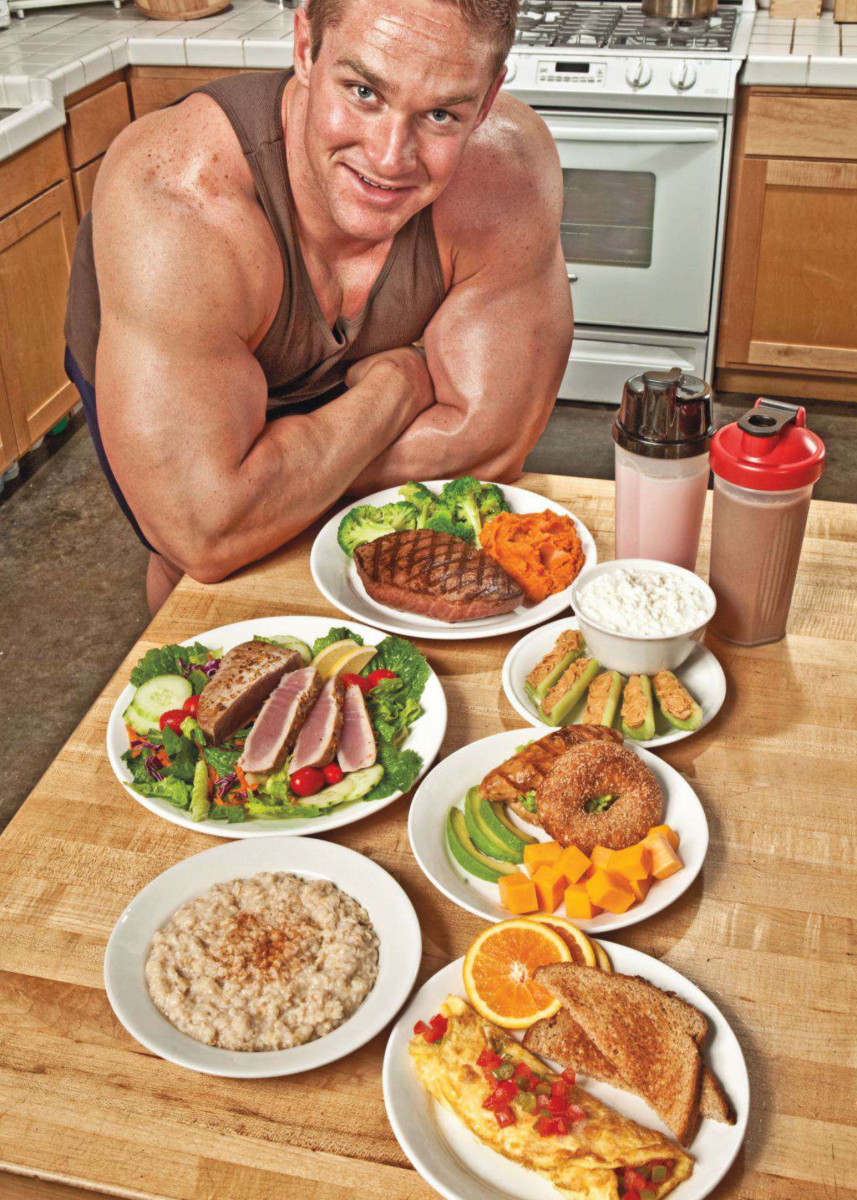
Rice has a similar amount of carbohydrates, with about 4 grams of protein.
A pint of semi skimmed milk contains approximately 20 grams of protein with about 10 grams of fat.
Peanut butter is a great weight gain food. A tablespoon of peanut butter contains about 100 calories and 3.5 grams of protein and peanuts contain mostly mono & polyunsaturated fats, which are good for you. A peanut butter sandwich made with wholegrain bread with a glass of milk, is a good meal if you're putting on weight.
If you want to put on weight then basicically it involves eating a lot of fresh meat, fish and eggs, drinking a lot of milk, 3 protein shakes a day and plenty of bread, rice, pasta and vegetables. Eating chocolates, cakes or crisps for the calories is a bad idea as although they are calorie rich, they contain a lot of fat and sugar which won't really help you.
Make sure you get plenty of protein in as this is what your body uses to repair the muscle.
Any other supplements?
If you're eating a balanced diet you shouldn't need any other supplements other than maybe protein shakes, but not everybody eats perfectly every day. A daily multivitamin, glucosamine and a fish oil tablet is what I have, to make sure I get the essentials. I don't think anything else is necessary to be honest.
The most important thing to remember?
The most important thing of all if you're aiming to put on weight and get a strong body is consistency is the key. If you consistently eat and train properly, then over time you will get there. If you are inconsistent with your weights and meals, then you won't really make any gains.
I am not a huge man, but by following the principles I've outlined in this article I'm a lot bigger and stronger than I used to be, in fact I'm about 40lbs heavier nowadays than when I started and still have definition. Even more importantly, I continue to get stronger. I wish somebody had outlined all of this stuff to me when I first started as I made every mistake under the sun. The principles I've outlined here, I use nowadays and they have helped me. If I can do it, you can do it.
Good luck and if you have any comments, please leave them below. Thanks for reading!